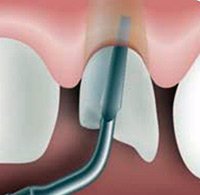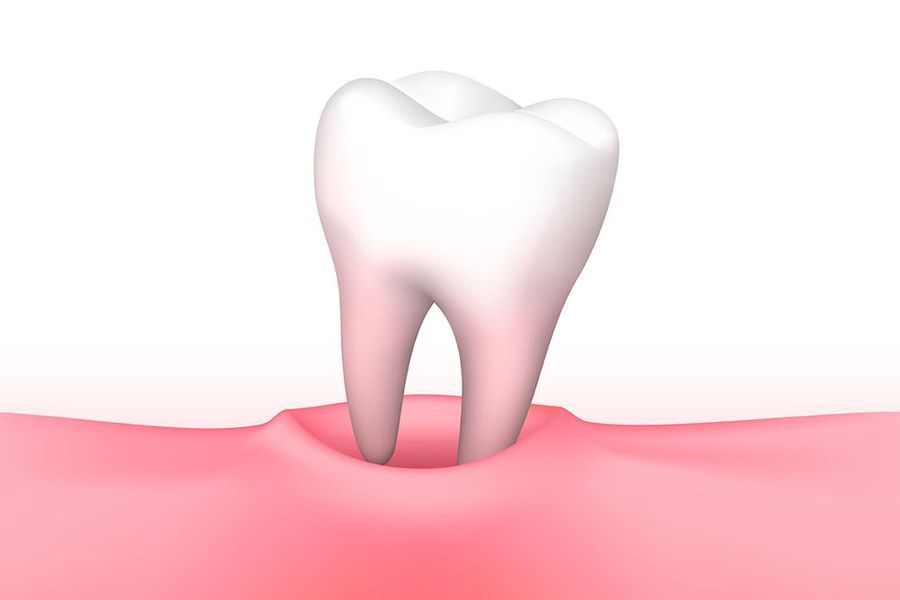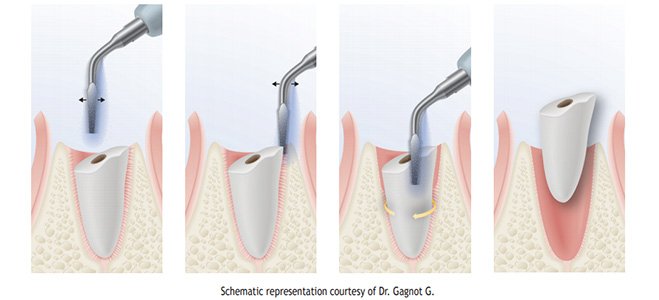St Lawrence Dentistry offers Piezo Sonic Technology, which can make dental extractions much more gentle.

When we talk about dental extractions there are many goals that Dr. Hawryluk keeps in mind.
These are:
- Keeping the patient comfortable.
- Remain conservative and achieve little or no bone removal around the tooth to be removed.
- Achieving a successful and desired outcome.
- Lay the foundations for a possible dental implant.
- Minimize trauma.
- Be able to observe clinical success in the months ahead.

When extracting teeth, Dr. Hawryluk is always looking to create the conditions which will allow for the best healing. The dentist is often building a bed for something else to go in later, such as a dental implant. One of the problems encountered in traditional extraction methods is the breaking of the ‘buccal plate’, which is the socket bone next to the cheek. It is imperative to keep this intact to preserve as much bone as possible for the successful placement of a potential future dental implant. St. Lawrence Dentistry also wants to make sure the way we take out a tooth is minimally invasive, so when the patient goes home after the tooth removal, they are comfortable.

When Guilin Woodpecker Medical Instruments put their new piezo sonic unit in Dr. Hawryluk’s hand, he was very excited. It represents an extraordinary advance in dental patient care. The piezo unit has a dynamic power setting, and it can regulate its power itself. This new technology can effortlessly get the job done while at the same time avoids collateral damage to soft tissue such as the gums, sinus membranes, and nerves.

The first step of the piezo extraction technique is local anesthesia. We do not underestimate the importance of proper anesthesia, and Dr. Hawryluk will take the time to make sure the patient is very numb and comfortable. Before removing a tooth, Dr. Hawryluk will go around the tooth with a ‘molt’ instrument, which loosens the soft tissue around the tooth. Then the piezo-sonic unit is applied to put gentle pressure down in the ‘periodontal ligament’ space, which encompasses the tooth. The Piezo unit has different settings of power and water supply based on the procedure we are doing. Dr. Hawryluk will alternate between various ‘tips’ and will place the tip in the ligament holding the tooth to the bone to enlarge it, thus making the extractions far easier. Next, Dr. Hawryluk will use forceps and remove the tooth while preserving the ‘buccal plate’ of bone. No one wants a dental extraction, but if indicated, piezo technology can get it done with a method that preserves your bone and is far gentler.

The best thing about the Piezo sonic dental extractions is the great post-operative comfort patients have. In many cases, when doing piezo assisted removals, these patients have little or no complaints about discomfort and, therefore, do not need much analgesic medication. Dr. Hawryluk finds this critical in terms of the relationship between the dentist and the patient. Piezo technology is especially excellent for patients who are medically compromised, as there is less need for pharmacological management of pain compared to older ‘legacy’ extraction methods.
The piezo extraction technique is far more conservative than traditional extraction techniques that use carbide burs to contour away bone to access broken tooth bits. In many cases, the piezo sonic extraction technique can avoid a ‘flap’ when doing an extraction (pushing back the gum to access the tooth bits). Teeth come out more cleanly, and the bone socket tends to have a healthy fresh look after tooth removal. The piezo unit will loosen the tooth from the ligament, and it will accomplish much of the extraction process gently.
If the dentist uses a carbide bur instead of a piezo tip around a tooth to facilitate removal, the bur can vibrate, jump, and risks tearing into the surrounding mucosa tissue. Tissue damage can ensue, which can affect the soft tissue, floor of the mouth, and a host of other areas.
With the piezo technique, tooth removal can often be in one piece as opposed to breaking it into pieces. There is less leaning on other teeth to provide a fulcrum to remove the tooth in question. Consequently, there is far less incidence of collateral damage to the adjacent teeth. Unlike conventional ‘surgical extractions’, the piezo technique does not remove the bone. Instead, it merely loosens the ligament holding the tooth to the bone.
The Piezo extraction technique is revolutionary and can offer our patients a much more comfortable experience with excellent post-procedure outcomes. Please call St. Lawrence Dentistry if you would like to learn more about this exciting advancement we offer.
Reference: Viva Learning, ‘less trauma with tooth extractions’ 2019









